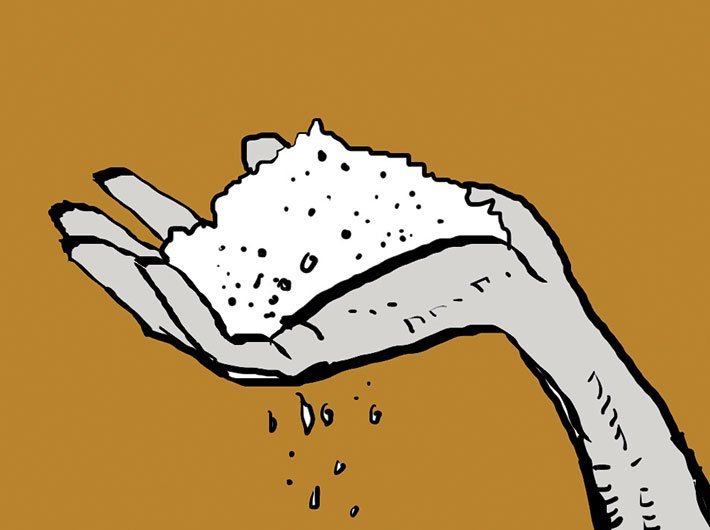India has not been able to tackle anaemia among women and children despite launching a targeted programme nearly 50 years back.
National Nutritional Anaemia Prophylaxis’s programme (NNAPP) was launched in 1970 to prevent nutritional anaemia in mothers and children.
Yet according to Global nutrition report 2017, India has the highest number ofwomen affected by anaemia, followed by China, Pakistan, Nigeria and Indonesia.
Union minister Ashwini Kumar Choubey informed parliament that the global nutrition report covers data of 140 countries evaluated against health targets decided by World Health Assembly. Globally, 61.4 crore women aged 15-49 years are affected by anaemia. In India, 14.67 crore women are suffering from anaemia.
As per WHO report on the global prevalence of anaemia 2011, 50 percent cases of anaemia are attributed to iron deficiency. Other causes of anaemia include other micronutrient deficiencies (e.g. folate, riboflavin, vitamins A and B12), acute and chronic infections (e.g. malaria, cancer, tuberculosis and HIV), and inherited or acquired disorders that affect haemoglobin synthesis (e.g. haemoglobinopathies).
As per NFHS data, overall prevalence of anemia among women and adolescent girls has not increased in country from 2005-06(NFHS-3) to 2015-16(NFHS-4). Data on deaths attributed to anaemia is not available for India, said the minister.
The health ministry has implemented National Iron Plus Initiative to prevent anaemia among women, children and adolescents. The program details out interventions for all life stages universally for given age group population in the country: 1. Pre-schoolers (6m-59 months): Bi-weekly IFA syrup; 2. School aged children (5 – 10 years): Pink coloured Weekly IFA tablet (WIFS Junior); 3. Adolescents (11 – 19 years): Blue coloured weekly IFA tablet (WIFS); 4. Women in Reproductive ages (20 – 49 years): Red coloured weekly IFA tablet; 5. Pregnant and lactating women: 1 Tab daily for 180 days starting after 1st Trimester, at 14-16 weeks of gestation. To be repeated for 180 days post-partum.
Undoubtedly, anaemia is the most common nutritional problem in the world. It is one of the leading causes of disabilities. Anaemia at any age has significant negative impact on the health of an individual varying from poor scholastic performance and cognitive impairment in children to one of the major indirect causes of maternal mortalities, said a report “Prevalence of Anaemia in Kerala State, Southern India - A Systematic Review” by PuruShothama Suseela Rakesh.
“In 1991, NNAPP was renamed as NNACP with new strategies to control nutritional anaemia. However, many evidences show that anaemia control program is not performing well in the country, due to various reasons. Considering the magnitude of damage anaemia can cause to the individual and the community on one hand and clear cut mechanisms available for its control on the other, it is highly unacceptable to have anaemia when the nation is striving for sustainable development goals,” the report said.
The planning commission noted that progress on goals on reducing malnutrition and anaemia cannot be assessed for want of updated data, but localised surveys indicated that the status has not improved.
During the Eleventh Plan funding for health by central government has increased to 2.5 times and of States to 2.14 times that in Tenth Plan, to add up to 1.04 per cent of GDP in 2011–12. When broader determinants of health (drinking water and sanitation, ICDS and Mid-Day Meal) are added, the total public spending on health in Eleventh Plan comes to 1.97 per cent of GDP.
Another study too said that prevalence of anaemia in all the groups is higher in India as compared to other developing countries.
In India, anaemia affects an estimated 50% of the population. The problem becomes more severe as more women are affected with it as compared to men. It is estimated that about 20%-40% of maternal deaths in India are due to anaemia and one in every two Indian women (56%) suffers from some form of anaemia, wrote Kawaljit Kaur in “Anaemia ‘a silent killer’ among women in India: Present scenario”.
Kaur said that in India, adolescent girls, who constitute a sizable segment of its population form a vulnerable group and are at a greater risk of morbidity and mortality. It is the shaping period of life when maximum amount of physical, psychological and behavioural changes take place. This is a vulnerable period in the human life cycle for the development of nutritional anaemia. Adolescent girls are particularly prone to iron deficiency anaemia because of increased demand of iron for haemoglobin, myoglobin and to make up the loss of iron due to menstruation and poor dietary habits [18].
India has among the highest number of cases of anaemia in the world, according to the NFHS-III undertaken in 2005-2006.
M E Bentley & P L Griffiths write in nature.com that prevalence of anaemia was high among all women. In all 32.4% of women had mild, 14.19% had moderate, and 2.2% had severe anaemia. Protective factors include Muslim religion, reported consumption of alcohol or pulses, and high socioeconomic status, particularly in urban areas. Poor urban women had the highest rates and odds of being anaemic. Fifty-two percent of thin, 50% of normal BMI, and 41% of overweight women were anaemic.
Their article “The burden of anaemia among women in India” said that new program strategies are needed, particularly those that improve the overall nutrition status of women of reproductive ages. This will require tailored programs across socio-economic groups and within both rural and urban areas, but particularly among the urban and rural poor.
